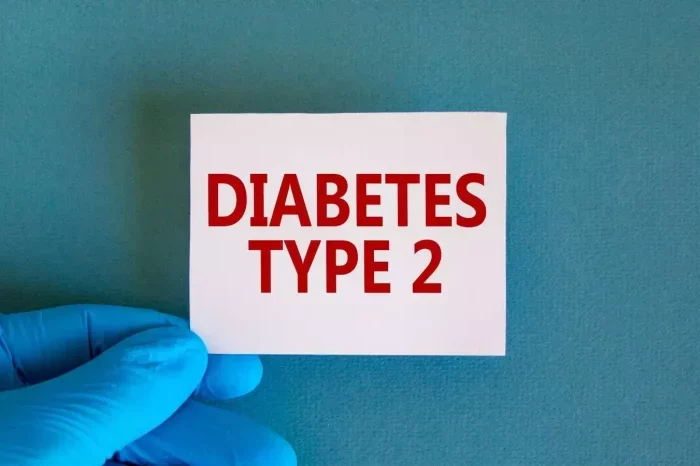Diabetes mellitus, a chronic metabolic disorder characterized by elevated blood sugar levels, has become a global health concern affecting millions of individuals worldwide. Among its various types, type 2 diabetes mellitus (T2DM) stands out as the most common form, comprising a significant portion of diabetes cases globally. Understanding the intricacies of T2DM is crucial for healthcare professionals, patients, and the general population alike. This article aims to delve into the nuances of T2DM, including its etiology, pathophysiology, clinical manifestations, diagnostic criteria, management strategies, and implications for public health.
Epidemiology
T2DM has reached epidemic proportions, with its prevalence escalating rapidly in recent decades. According to the International Diabetes Federation (IDF), approximately 463 million adults aged 20-79 were living with diabetes in 2019, and this number is projected to rise to 700 million by 2045. Among these cases, T2DM accounts for the vast majority, comprising around 90% of all diabetes cases globally. The prevalence of T2DM varies significantly among different populations, with higher rates observed in individuals with certain risk factors such as obesity, sedentary lifestyle, unhealthy dietary habits, and genetic predisposition.
Etiology
The development of T2DM is multifactorial, involving complex interactions between genetic, environmental, and lifestyle factors. While genetic susceptibility plays a significant role, environmental influences such as obesity, physical inactivity, and unhealthy dietary patterns are major contributors to the rising prevalence of T2DM. Insulin resistance, a hallmark feature of T2DM, occurs when the body’s cells fail to respond effectively to insulin, leading to impaired glucose uptake and utilization. Over time, pancreatic beta cells become unable to compensate for insulin resistance, resulting in progressive beta cell dysfunction and eventual decline in insulin secretion.
Pathophysiology
The pathophysiology of T2DM is characterized by a combination of insulin resistance and beta cell dysfunction, leading to chronic hyperglycemia. Adipose tissue, particularly visceral fat, plays a crucial role in the development of insulin resistance through the release of proinflammatory cytokines and adipokines, which disrupt insulin signaling pathways. In addition, ectopic lipid deposition in organs such as the liver, muscles, and pancreas further exacerbates insulin resistance and impairs glucose homeostasis. Chronic hyperglycemia contributes to the development of microvascular and macrovascular complications, including retinopathy, nephropathy, neuropathy, cardiovascular disease, and stroke, which significantly impact morbidity and mortality in patients with T2DM.
Clinical Manifestations
The clinical manifestations of T2DM can vary widely, ranging from asymptomatic hyperglycemia to overt symptoms such as polyuria, polydipsia, polyphagia, fatigue, blurred vision, and recurrent infections. Many individuals with T2DM may remain undiagnosed for years, as the disease often progresses insidiously, with subtle symptoms that may be attributed to other underlying conditions or overlooked altogether. Complications arising from chronic hyperglycemia may manifest years after the onset of T2DM, highlighting the importance of early detection and intervention to prevent long-term complications.
Diagnostic Criteria
The diagnosis of T2DM is based on fasting plasma glucose (FPG) levels, oral glucose tolerance test (OGTT), or hemoglobin A1c (HbA1c) levels, as recommended by various international guidelines. According to the American Diabetes Association (ADA), the diagnostic criteria for T2DM include an FPG ≥ 126 mg/dL (7.0 mmol/L), a 2-hour plasma glucose ≥ 200 mg/dL (11.1 mmol/L) during an OGTT, or an HbA1c ≥ 6.5%. It is important to note that diagnostic thresholds may vary slightly between different guidelines, and confirmation of the diagnosis may require repeat testing on a separate day.
Management Strategies
The management of T2DM aims to achieve and maintain glycemic control, prevent or delay the onset of complications, and improve overall quality of life. Lifestyle modifications, including dietary changes, regular physical activity, and weight management, are fundamental components of T2DM management and are recommended for all individuals with T2DM, regardless of pharmacological therapy. Pharmacotherapy options for T2DM include oral antidiabetic agents such as metformin, sulfonylureas, thiazolidinediones, dipeptidyl peptidase-4 (DPP-4) inhibitors, sodium-glucose cotransporter-2 (SGLT2) inhibitors, glucagon-like peptide-1 (GLP-1) receptor agonists, and insulin therapy, which may be initiated alone or in combination based on individualized treatment goals and patient preferences. Bariatric surgery may be considered for selected patients with T2DM who are morbidly obese and have not achieved adequate glycemic control with conventional therapy.
Implications for Public Health
The increasing prevalence of T2DM poses significant challenges for public health systems worldwide, necessitating comprehensive strategies to prevent and manage the disease effectively. Population-based interventions aimed at promoting healthy lifestyles, improving access to healthcare services, and addressing social determinants of health are essential for reducing the burden of T2DM and its complications on individuals, families, and communities. Collaborative efforts involving governments, healthcare providers, policymakers, educators, industry stakeholders, and advocacy groups are crucial for implementing evidence-based interventions and policies that can effectively mitigate the impact of T2DM on public health.
See also:What Is The Worst Type Of Diabetes You Can Have?
Conclusion
Type 2 diabetes mellitus is the most common form of diabetes, characterized by insulin resistance and beta cell dysfunction, leading to chronic hyperglycemia and associated complications. Its prevalence is escalating globally, driven by a combination of genetic, environmental, and lifestyle factors. Early detection, lifestyle modifications, and pharmacological therapy are key components of T2DM management, aimed at achieving glycemic control and preventing long-term complications. Public health initiatives focusing on prevention, early intervention, and health promotion are essential for addressing the growing burden of T2DM and improving outcomes for individuals affected by this chronic condition. By enhancing awareness, promoting healthy behaviors, and fostering supportive environments, we can collectively work towards a healthier future for individuals with T2DM and society as a whole.
Related topics:
What Is The Safest Type 2 Diabetes Medication

























